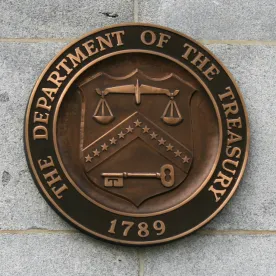Following up on President Biden’s recent executive order on digital assets, the US Treasury Department recently announced the publication of three reports on digital assets. The reports address issues relating to The Future of Money and Payments; Implications for Consumers, Investors, and Businesses; and an Action Plan to Address Illicit Financing Risks of Digital Assets.
The first report, on the future of money and payments, is focused primarily on development of a US central bank digital currency, or US CBDC. It makes four recommendations for future action: (1) advance work on a possible US CBDC, in case one is determined to be in the national interest, (2) encourage use of instant payment systems to support a more competitive, efficient, and inclusive US payment landscape, (3) establish a federal framework for payments regulation to protect users and the financial system, while supporting responsible innovations in payments, and (4) prioritize efforts to improve cross-border payments, both to enhance payment system efficiency and protect national security. The report also emphasizes the need to achieve these outcomes in coordination with other jurisdictions around the world, including:
-
fostering the safety and soundness of private and public sector innovations for cross-border payments, while protecting US national security;
-
considering the feasibility of new multilateral platforms and arrangements for cross-border payments, including utilizing instant payments;
-
working across jurisdictions to align regulatory, supervisory, and oversight frameworks for cross-border payments; and
-
harmonizing data and market practices for cross-border payments.
The second report, on the implications for consumers, investors, and businesses, surveys the crypto marketplace, discusses uses cases and market trends, and describes various risk factors associated with digital assets. The second report pays special attention to risks that may disproportionately affect those whom the report describes as “populations vulnerable to disparate impacts.” It too concludes with a series of recommendations:
-
US regulatory and law enforcement authorities should, as appropriate, pursue vigilant monitoring of the crypto-asset sector for unlawful activity, aggressively pursue investigations, and bring civil and criminal actions to enforce applicable laws with a particular focus on consumer, investor, and market protection.
-
US regulatory agencies should use their existing authorities to issue supervisory guidance and rules, as needed, to address current and emerging risks in crypto-asset products and services for consumers, investors, and businesses. Agencies should work collaboratively to promote consistent and comprehensive oversight.
-
US authorities should, where appropriate, work individually and through the Financial Literacy and Education Commission to ensure that US consumers, investors, and businesses have access to trustworthy information on crypto-assets.
The final report is focused primarily on regulatory enforcement activities involving illicit financing activities that make use of digital assets. It identifies three broad categories of illicit financing risks: money laundering, sanction evasion through techniques generally described as “proliferation financing,” and terrorist financing. The report describes prior US government efforts to mitigate these risks. It then lays out seven generally categories for future “priority actions”:
-
monitoring emerging risks;
-
improving global Anti-Money Laundering/Combating the Financing of Terrorism (AML/CFT) regulation and enforcement;
-
updating Bank Secrecy Act regulations;
-
strengthening US AML/CFT supervision of virtual asset activities;
-
holding accountable cybercriminals and other illicit actors;
-
engaging with the private sector; and
-
supporting US leadership on financial payments technology.
The final report concludes with a series of questions Treasury hopes to use to inform future regulatory conversations regarding digital asset supervision and regulation.




 />i
/>i


